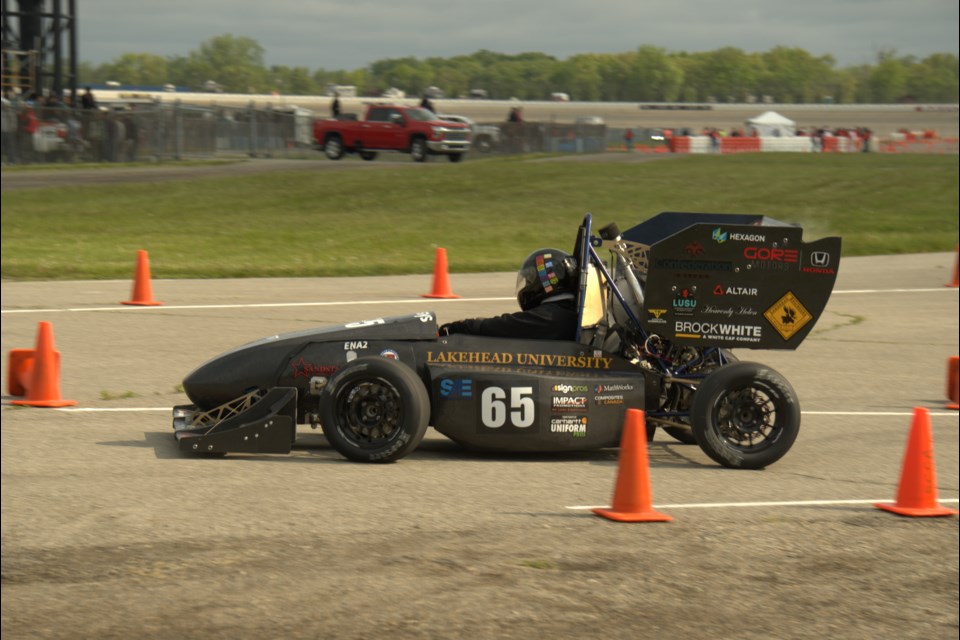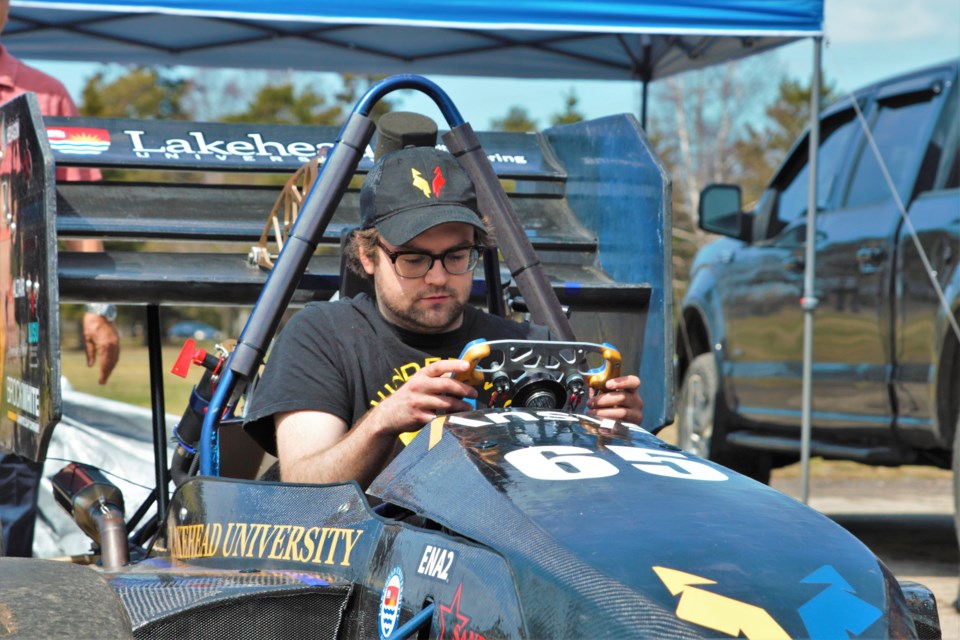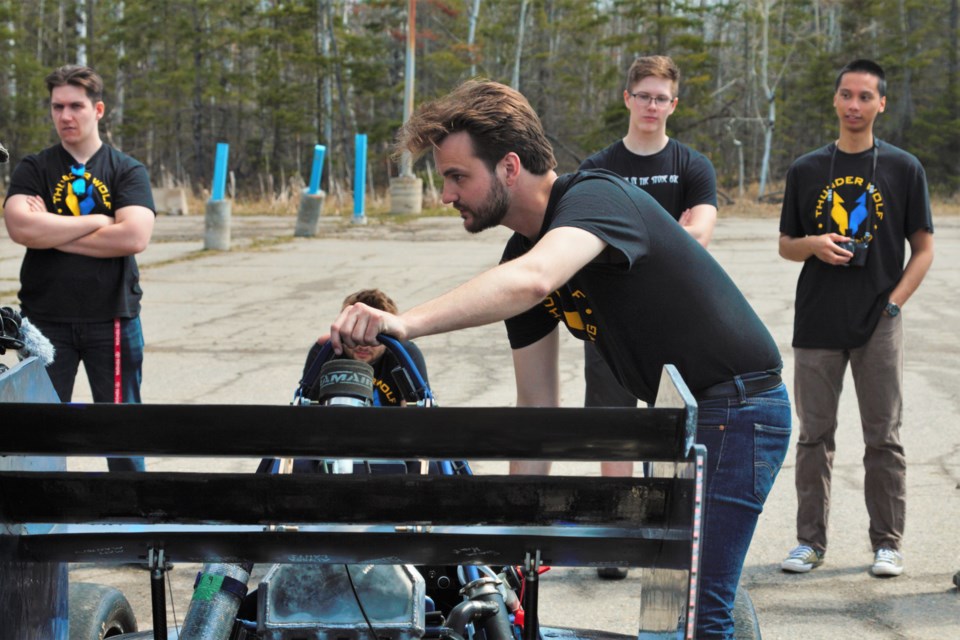THUNDER BAY — Lakehead’s Thunder Wolf Racing team is celebrating its finish after returning from the highly-regarded international Formula SAE competition in Michigan.
The fourth-year mechanical engineering students involved in the degree project, which sees them build a formula-style race car from the ground up, call it an invaluable learning experience that helps set them up to enter the field.
The car the team assembled passed the Formula SAE’s technical inspections — something not all vehicles do — but missed out on some events due to technical issues, ultimately placing 92nd out of 120 teams.
That may not have met the lofty goal the team had set itself, to place within the top quarter of the competition, but students leading the group said they ultimately left satisfied.
“I think everyone’s happy with how it went overall,” said assistant team captain Matthew Manten.
“Our only goal at the beginning of the year was to create a car that passed all of the inspections and raced on the track, because it’s been four or five years since our team had done this. That was really our only goal, and we achieved it.”
The SAE competition measures far more than just speed, probing the vehicle’s design, reliability, and fuel efficiency.
The race is broken into several parts, like auto cross, skid pad, endurance, and acceleration, designed to measure different elements of the vehicle’s performance.
A series of “static events” judge things like engineering practice, purposeful design, and build quality.
While those elements are seen as paramount by the engineering students, for several who also drive it in competition, there’s also the rush of getting behind the wheel.
“It’s like nothing you can even describe,” said team captain Dalton Lamoureux. “You’re in such a small vehicle [and] you feel like you’re going ten times faster than you are.”
“Just the response of the steering, seeing the front wing and aero[dynamics] package on it is insane. So it definitely pays off all of that work we put into it, just being able to see everything come to life.”
Lamoureux called the car’s fully carbon fibre aerodynamics package, manufactured in partnership with Confederation College's AMET program, a milestone for the team.
It’s one of the features that Kailash Bhatia, a senior engineering technologist at Lakehead who serves as team manager for Thunder Wolf Racing, said made this year’s design one of the best he’s seen.
Bhatia, who helps with steps like ordering parts and manufacturing using Lakehead’s CNC machines, called the school’s ability to hold its own in competition with better-funded teams from globally prestigious schools a testament to the students’ dedication.
“Lakehead University is isolated in the middle of Canada, where there’s not much industry that can support us and sponsor us,” he said. “You wouldn’t believe the cars that are built in Germany … they spend more than $50,000, easily, and they get over a million dollars in sponsorship.”
Some teams are also able to use the manufacturing facilities of large automotive companies to assemble their cars, Bhatia added.
Lakehead’s team, by contrast, raised just shy of $20,000, leaving students to fund part of the trip to the competition themselves.
The Formula SAE competition does not have a spending limit, though its points system rewards teams with lower budgets.
Participation on the team is a badge of honour that stays with students after they leave — one member of a past Thunder Wolf racing team showed up in uniform in Michigan to greet this year’s crew.
That comes with the territory of a project that demands a lot of participating students, eating up many of their non-class waking hours for an entire school year, Manten said, but added they wouldn’t have it any other way.
“I think it’s really important that projects like this exist,” he said. “There’s nothing else in your education that teaches you what this teaches you. It really is like running a business, you’re building a real thing. It’s just an absolutely invaluable experience.”






